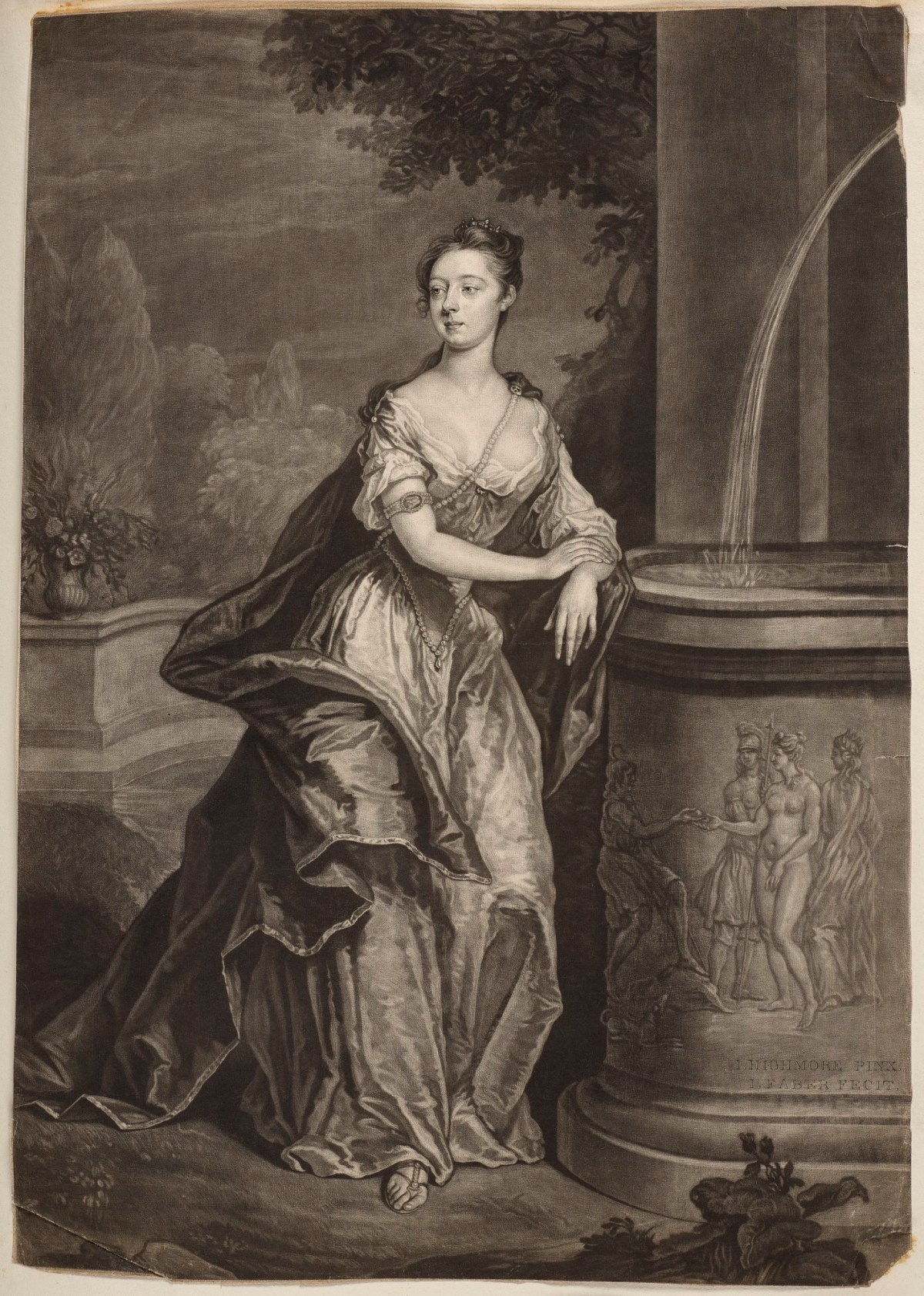
Joseph Highmore, Cordelia Collier (?), c.1725-50.
508 mm x 356 mm. © Photo: Royal Academy of Arts, London.
This image is not available to download. To licence this image for commercial purposes, contact our Picture Library at picturelibrary@royalacademy.org.uk
Cordelia Collier (?), c.1725-50
Joseph Highmore (1692 - 1780)
RA Collection: Art
This print is part of the 'British School II' album, which originally contained 170 prints published between around 1713 and 1810. A significant number (around 15-20) have since been removed.
The album begins with a two-page prefatory text, written after 1837 (it refers to the RA’s move to Trafalgar Square that year). This text starts with two paragaphs about British art in the early eighteenth century (framed by Walpole’s remark that at the accession of George I ‘the arts in Britain were sunk to their lowest state’). The author continues by describing the origins of the Royal Academy and emphasising the role played by Academicians in the development of British art. A list of useful published sources for the study of British art in the eighteenth century is appended. There is no reference in this introduction to the prints included in the album, and little correlation between the prefatory text and the contents of the album. For instance, while the text emphasises the primacy of the RA in the development of British art during the eighteenth century, the album contains the work of no more than around fifteen full academicians, with artists such as Reynolds, West, Fuseli, Lawrence and Gainsborough not represented at all.
The album is organised chronologically by artist rather than engraver. In cases where printmakers have engraved a number of works by the same artist (e.g. Richard Houston and William Hoare, or John Faber Jr. and John Vanderbank) this leads to groups of prints by the same engraver, but the compiler’s interest is clearly more in the source artists than the printmakers.
The artists represented most prominently include: Michael Dahl, Jonathan Richardson the Elder, John Vanderbank, Jean-Baptiste Van Loo, Thomas Hudson, Allan Ramsay, William Hoare, Angelica Kauffman and Prince Hoare. As this list of artists suggests, portrait painters tend to be represented in greater depth: while there are many subject prints (landscape, history, etc.), these tend to be only one or two per artist. Overall the first half of the album consists mostly of portraits, and the second half mostly of landscapes and fancy subjects. The general uniformity of subject matter is occasionally disrupted by the presence of tickets, topographical prints and other unexpected items.
The prominence of William and Prince Hoare within the album, and the inclusion of rare prints connected with these artists, is noteworthy, and suggests a particular interest in the Hoares and perhaps a possible connection with the Hoare family.
There is little in the way of inscriptions to help identify previous ownership, although two prints carry the same ‘EP’ [presumably Edward Peart] pencil inscription lower left.
Object details
508 mm x 356 mm
Start exploring the RA Collection
- Explore art works, paint-smeared palettes, scribbled letters and more...
- Artists and architects have run the RA for 250 years.
Our Collection is a record of them.



